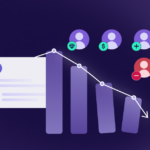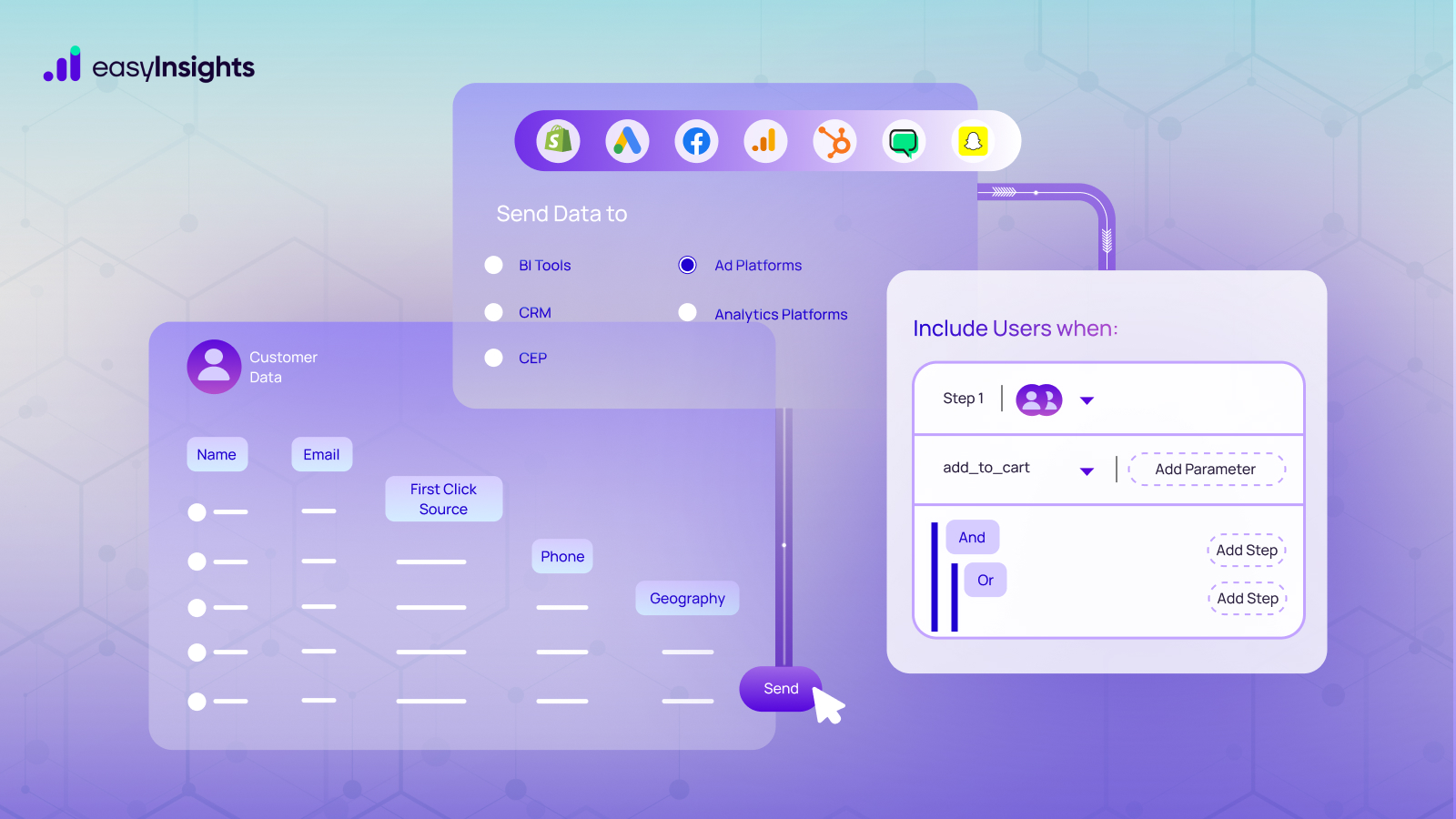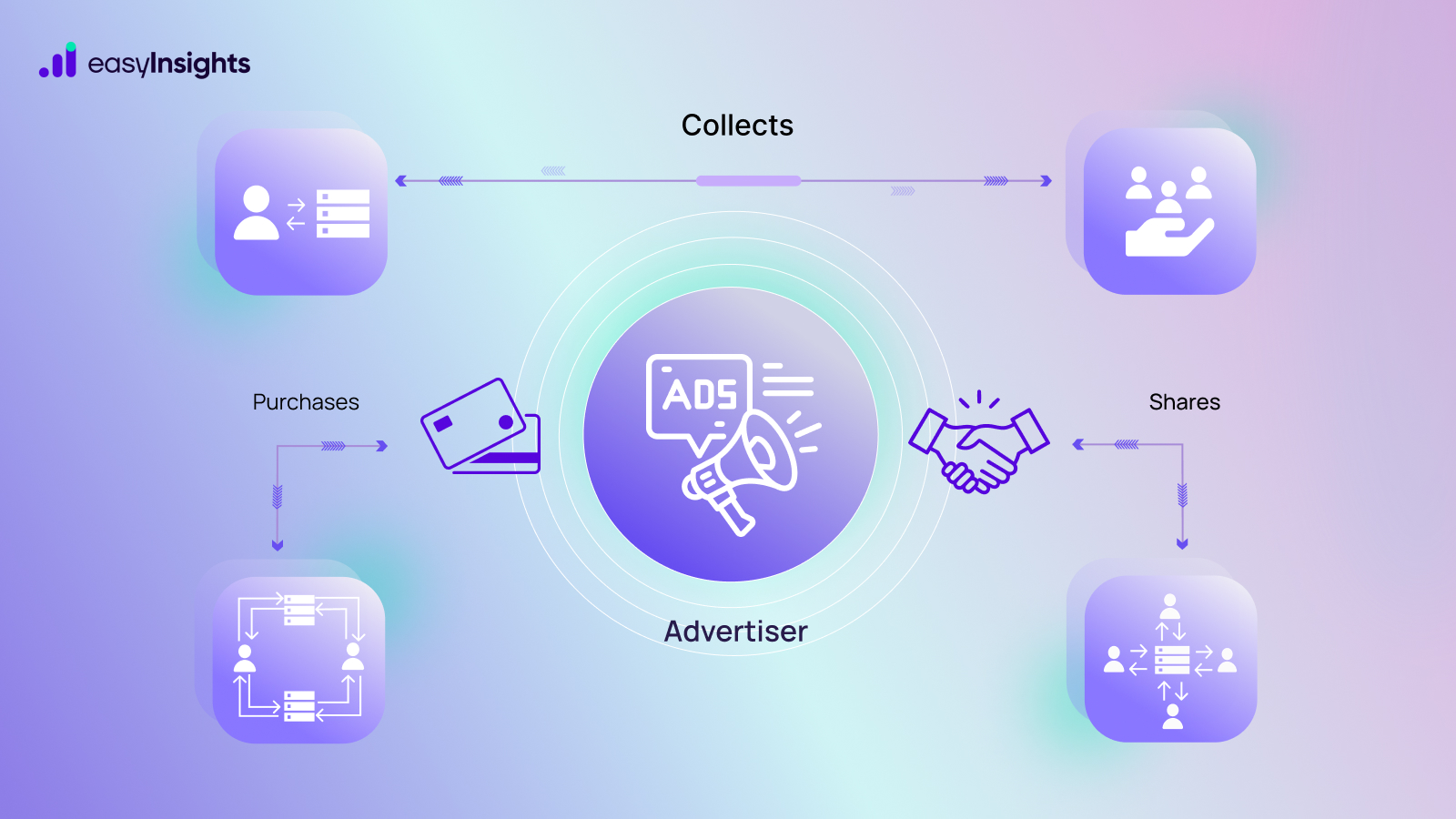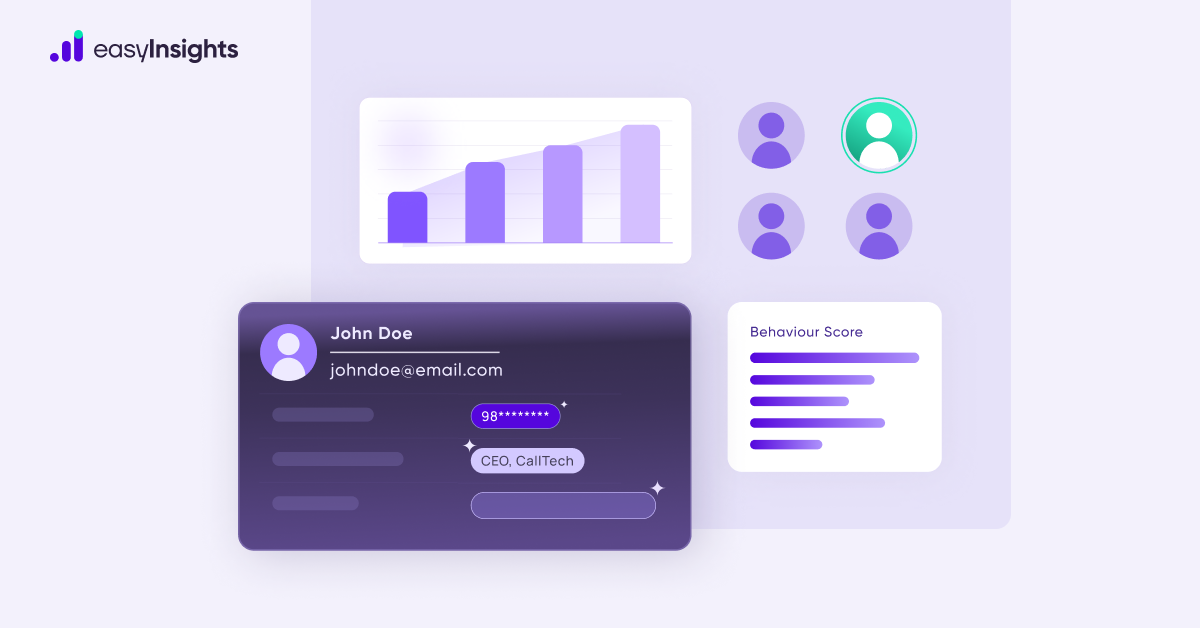
Personalization and automation are two essential tenets of the art that is performance marketing. However, one can’t benefit from these two strategies without finely tuned user segments. User segmentation is the missing link that keeps brands from running campaigns on autopilot while clocking unparalleled growth.
In this blog post, we’ll explain why user segmentation are essential and walk you through some real-life use cases to inspire your marketing efforts.
Jump ahead to:
Relevance of User Segmentation in Marketing
A user segment refers to a subset of users within a broader market or audience, grouped together based on characteristics, behaviors, preferences, or needs they share. This type of segmentation allows you to better understand your user base, be it their pain points or product usage patterns. Backed with the insights from user segmentation, you can tailor your products, services, marketing, and communications more effectively to meet the distinct needs of each group.
Data suggests that mindfully created user segments yield better marketing outcomes when used correctly. LinkedIn reports that 8 out of 10 companies that segment users report increased sales.
According to Sales Manago, over 75% of marketing ROI directly results from segmented campaigns. Moreover, segmented email campaigns get 14% higher open rates, 101% more clicks, and boost customer lifetime value by 30%.
Types of User Segments
On average, a company uses 3.5 different segmentation criteria to divide its user base into subsets. Here are some commonly used user segmentation criteria:
- Demographic: Segments users by age, gender, income, education, and occupation.
- Geographic: Groups users by location, including country, region, city, or climate.
- Psychographic: Based on personality, values, attitudes, interests, and lifestyle choices.
- Behavioral: Focuses on users’ purchasing behavior, product usage, content preferences, and interactions with the brand.
- Technographic: Segments users by their use of technology, platforms, and devices.
- Firmographics: Groups prospects based on shared company attributes like number of employees, revenue, industry, or location.
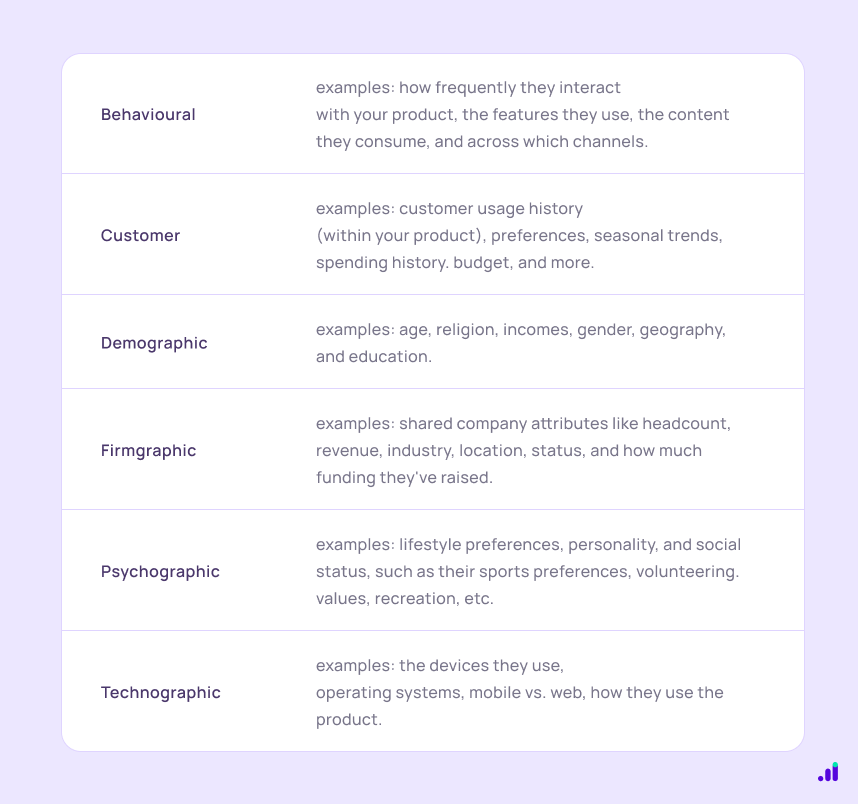
Additional Read: Using Segments and Segment Exploration in GA4
How to Create User Segments?
Here’s how you can start segmenting your users:
- Identify Segmentation Criteria
The first step is to determine the criteria for grouping different users, such as whether they will be grouped based on demographic, behavioral, or needs-based characteristics or a combination of multiple characteristics. The key here is to understand your end goal. What you plan to achieve should guide your segmentation criteria.
For instance, demographic and geographic segmentation works well for an awareness campaign. Similarly, to target your existing audience for upselling and cross-selling, you must segment users based on their product usage patterns, purchase history, needs and wants, etc.
- Collect User Data
Depending on your segmentation criteria, you must collect relevant and accurate data to divide your users effectively. You can use all the usual sources of user data, such as your site, web analytics tools, social media platforms, CRM systems, etc.
However, collecting data from siloed platforms and channels individually will leave you with user data with too many gaps to fill. Instead, use a composable CDP (Customer Data Platform) so that you can leverage data from your data warehouse to get a comprehensive view of users.
Composable CDPs like EasyInsights collect data from disparate sources in a cloud data warehouse. They also offer tools to transform and harmonize it easily, allowing you to use data modeling techniques and multi-channel attribution to get a 360-degree view of your users.
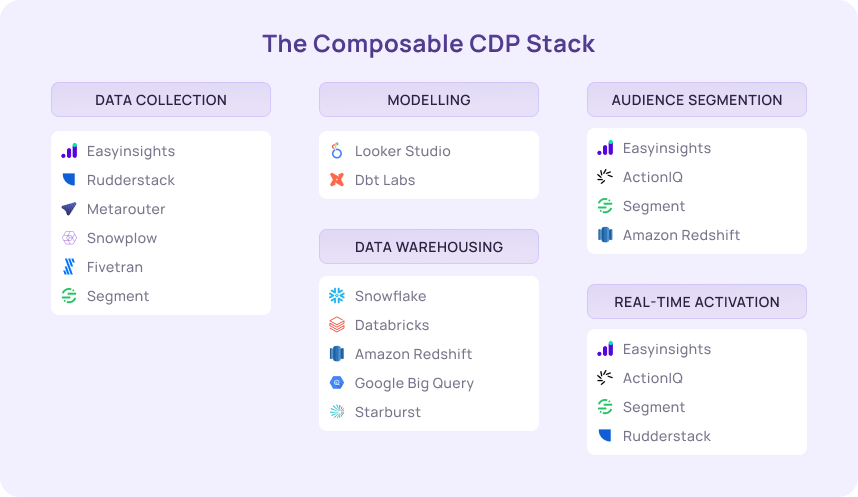
- Create User Segment
Once you have all the data you need, you can create user segments for your campaigns. Platforms like Google Analytics 4 (GA4) and Meta Ads offer segmentation tools called custom audiences that you can use to group users based on their distinct nature.
These tools also let you import lists or user data from other sources. But you can imagine how quickly it can turn into an export-import nightmare. That’s where you can again turn to your data warehouse and use a Composable CDP like EasyInsights to create segments, completely eliminating the need to transport data between different tools.
Moreover, composable CDPs feature visual audience builders that let you model data and create segments using a point-and-click interface. This allows even non-tech users to chime in and experiment with custom audiences.
Additional Read: GA4 Audiences: A Marketer’s Guide
- Share User Segments Across Marketing Tech Stack
After all the hard work, you’d want your segments readily available on all your marketing tools. Composable CDPs like EasyInsights not only accumulate from various sources, but they also use a technique called Reverse ETL to sync data models and custom segments downstream, from the data warehouse to CRMs, email automation tools, advertising platforms, and more.
User Segmentation in Marketing
Here are some ways brands leverage user segments in marketing:
- Deliver Personalized Experience to Users
The first popular use case of user segmentation is for delivering a tailored in-app experience to users. This will require you to collect behavioral data to understand how users utilize your platform.
If you use Grammarly, you must have received their weekly email campaign that shows stats like how many words you analyzed and how accurate or productive you were compared to others.
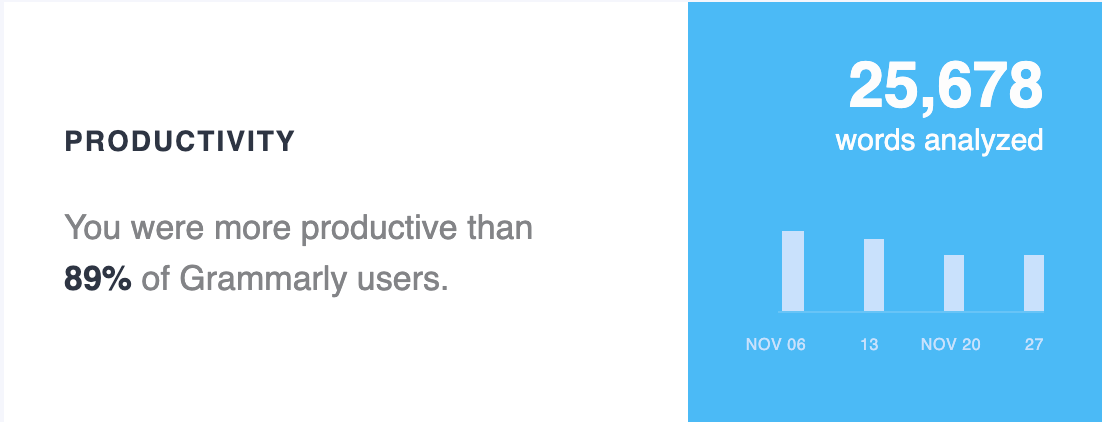
But that’s just one way of leveraging user segments.
B2B brands segment their users to create personalized product demos and walkthroughs to enhance the onboarding experience. They achieve this by segmenting users based on designation, department, and seniority at their organization and creating personalized enablement content.
- Serve Targeted Ads
The next common usage of segments is in advertising. At the most basic level, brands use demographics like gender, age, geography, etc., to serve ads to different subsets of their audiences.
Here’s an example of how bootmaker Lucchese shows ads based on a user’s gender. Their ads carry tailored copy, media, and CTA, all aimed at generating higher conversions.
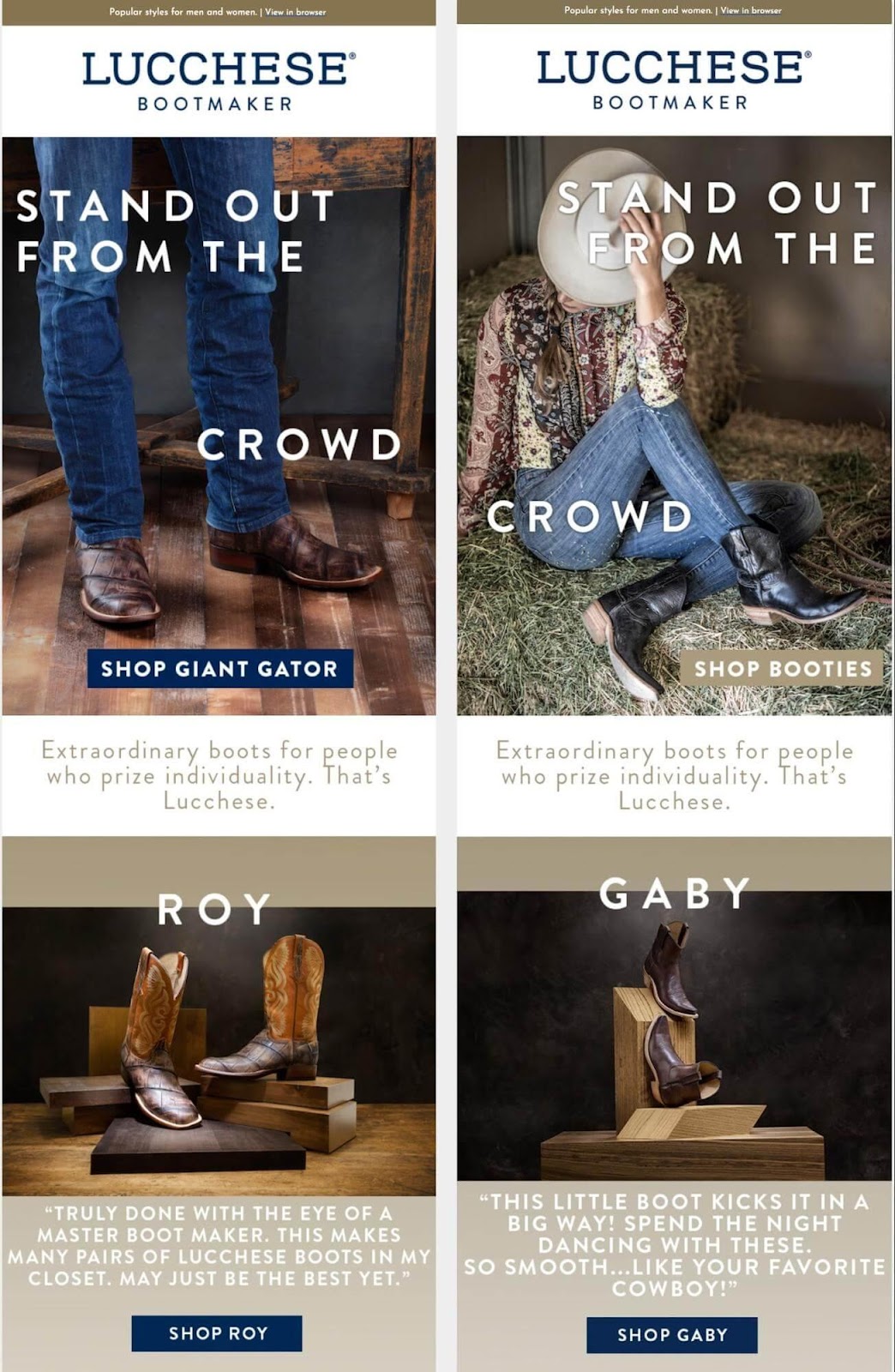
You can also go deeper and segment audiences based on their purchase history. Kenneth Cole, an American fashion brand, uses this segmentation trick to identify frequent buyers. Then, it shows them ads with exclusive offers like discounts, free shipping, etc.

Additional Read: How to use first-party data for your e-commerce brand
- Retarget Infrequent Users
Similar to targeting your active users, you can also leverage segmentation to win back inactive users. You’ll need to identify users who have low activity levels on your platform, like customers with abandoned carts or users who have been inactive for an extended period.
Duolingo relies on this segmentation strategy to reel in inactive users. It sends such users an email nudge reminding them they have been inactive. It also highlights the value it offers for that extra motivation that a user may need to restart using the platform.

Segment Your Users with EasyInsights
User segmentation gives businesses valuable insights into their users. It helps you understand what problems users face, what they expect from your solution, and how they utilize it. These insights empower brands to deliver personalized experiences and create tailored campaigns to engage users while also generating higher lifetime value.
But first, you’ll need uninterrupted access to user data. That’s where EasyInsights can help. EasyInsights is a composable CDP that allows you to collect, store, transform, and segment user data right in your data warehouse. It also lets you sync user segments to your various business apps downstream.
Book a demo today to see EasyInsights in action!
Additional Read: Why do B2B Companies need Composable CDPs?



